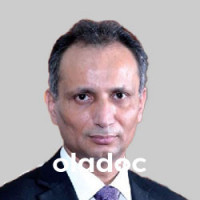Clubfoot is a condition whereby babies are born with a malpositioned foot, such that it curls sideways or it points in the wrong direction, looking crooked, or upside down. Clubfoot presents at birth and is a relatively common defect.
About 50 per cent of children who have this disorder has it in both feet. In an otherwise healthy child, clubfoot can be an isolated presentation and should be treated soon after birth to ensure that no long-term consequences occur. Parents with children who have clubfoot must immediately take their children to an orthopedic surgeon as soon as possible.
Table of Contents
What causes clubfoot?
A clubfoot occurs when the tendons in the foot are shorter than they should be. Tendons are the bands of tissue connecting muscles to bones, and in clubfoot, both muscles and tendons are shorter than they should be.
While the exact cause of clubfoot is not known to doctors, there are some factors that increase the likelihood of clubfoot in children. These include:
Gender: Male children predominantly suffer from clubfoot (two-thirds of all cases).
Family history: If the parent(s) of the child has clubfoot, then the baby is more likely to have it as well. Moreover, if the sibling of a baby has clubfoot, then he is twice as likely to get it.
Lifestyle during pregnancy: Mothers who don’t avoid smoking during pregnancy, and use illegal drugs put their baby at risk of developing clubfoot among other deformities.
Other birth defects: Clubfoot can sometimes be part of other congenital disorders as well. It may be linked with a spinal condition called spina-bifida—a condition whereby the spine and spinal cord don’t close properly.
Little amniotic fluid during pregnancy: Clubfoot risk increases when the baby has little room to expand in the gestational sac, as in the situation of decreased amniotic fluid.
Treatment of clubfoot:
Treatment of clubfoot should be started soon after birth, to avoid complications later in life. The goal is to fix it early enough before the child learns to stand and walk. Casting or surgery are the two main options when treating clubfoot.
Casting:
Because the tendons of a baby are bendable and stretchy, doctors turn the clubfoot in the right direction and cast it in the right place. This cast is renewed weekly, and the position is turned weekly as well. The goal is to gently turn the foot into the position it should be. This pattern is followed for weeks or months until the right position is attained. X-rays are also done to ensure that the bones are also returning in the right direction.
Surgery:
This is the option when the tendons are short, and stretching and bending are not enough to put the foot in the right direction. The surgery is done between the ages of six months to one year. Unlike the casting system which lingers for months, one procedure fixes the whole foot. A cast is still needed post-surgery, for at least a year so that the foot maintains its corrected angle.
If you have an orthopedic concern regarding your child, then book an appointment with top orthopedics in Karachi, Lahore and Rawalpindi through oladoc.com, or call our helpline at 042-3890-0939 for assistance to find the RIGHT professional for your concerns.











